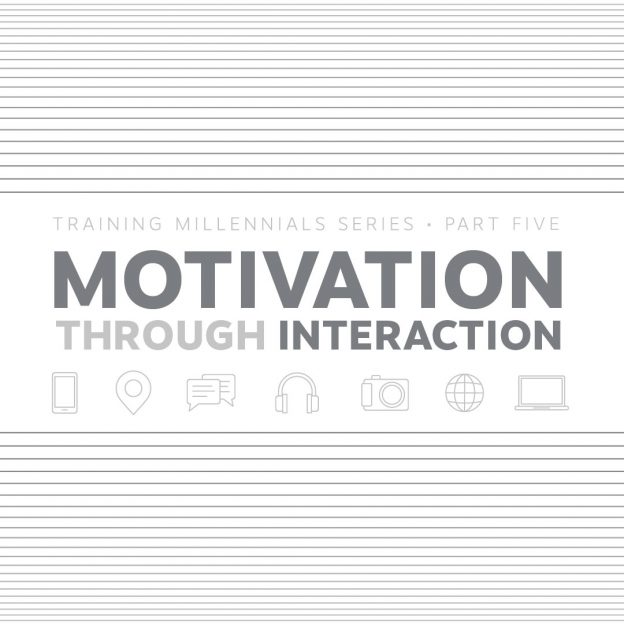Training Millennials Series Part 5: Motivation Through Interaction
10.27.2016
In the final part of our series, we discuss how to create a work environment that motivates millennials. The norm used to be that if you wanted employees to be inclined to work harder, or for a longer period of time, you’d offer a monetary incentive. While money is still important to millennials, they are likely to put in extra effort if offered other things – additional vacation days, flexible work schedules, taking lead on a big project, or upper management recognition. They like to know that their work is making a difference, and prefer to work on projects with a team.
Check out the stats below to see how millennials are incentivized, and what the best ways are to motivate them within your workplace.
95% of millennials are motivated to work harder when they know where their work is going.
- Millennials want to know why the work they are doing matters. They enjoy working on projects that are going to make an impact, and like to be challenged. In order for them to excel in a work environment, clearly communicate how meaningful the work is that they are doing. If it’s part of a big initiative for the company that year, include that information when you are briefing them on the project. If you are designing a training course, try including a video up front about how this will help them in their jobs. Having this information available early on will encourage them to complete their work, and make them more eager to get started.
88% of millennials prefer a collaborative work environment over a competitive one.
- While Baby Boomers and Gen Xers may prefer to hull up on their office to complete a project, millennials are spending their time in conference rooms brainstorming and sharing ideas. Because of the growing popularity of this type of collaborative work environment, offices around the world are implementing open office spaces, and using sites like SharePoint and Google Docs that allow multiple people to work on the same project at once. As an employer, promote the use of social networking sites, Skype sessions, or chat forums for communication between other employees. This not only helps employees complete a project or training in a timely manner, but it encourages cross functional interaction with other team members they may not interact with on a daily basis.
In larger companies, a common problem is that employees do not feel a connection to management or senior leadership.
- The majority of millennials haven’t had as much interaction with their leadership team because they are still working their way up in the company. They have a desired interest in the direction of the company, and would love to be learning more about the goals executives set for the year. This way, they can know their work is going towards a bigger goal. In order to combat this issue, consider holding a monthly meeting for your company where the executives give a recap of the past month, and what’s to come later in the year. Or, your senior management could kick off an on-site at the office where many lower-level employees are present. If you are designing an elearning or mlearning training course, you can also create this connection by having a video message from senior leadership explaining why the employees are taking the course, and how it fits into the company’s larger mission.
Thanks for following our Training Millennials blog series! We hope you’ve gained some valuable insights on how to best train millennials in the workplace, and picked up some interesting statistics along the way. For any additional information, contact us today!